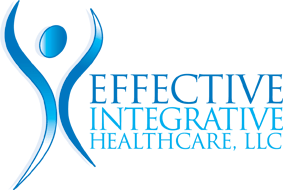How Trigger Point Therapy Works

Do you have any areas of tight, knotted muscle in your body? The neck and upper back are particularly common areas for these “trigger points” to form. Fortunately, it’s not necessary to live with the pain and discomfort of muscle knots, which can distract you from work and play. Find out more about how trigger point therapy works and how it can help you live a more active, productive lifestyle.
What is a Trigger Point?
Myofascial trigger points form as a result of stress, overworked muscles, traumatic injury, or poor posture. They produce local and referred pain and often accompany chronic musculoskeletal disorders.
Trigger points get their name from the idea that when you pull the trigger of a gun, the bullet hits its target in another location. In other words, the source of a trigger point may be in one part of your body while its effects are felt elsewhere.
Types of Trigger Point Therapy
Various methods are used to release trigger points, giving you multiple options to choose from. Here are three of the top therapies available:
- Trigger point injections have been shown to be one of the most effective modalities for treating trigger points. The treatment is administered by a licensed medical provider, who targets the trigger point with a plant-based anti-inflammatory injection. Unlike traditional lidocaine injections, which just suppress the pain, our use of anti-inflammatories increases your relief and aid in healing. The process only takes a few minutes and delivers fast-acting relief with no recovery time.
- Dry needling is an option for patients who prefer a non–pharmaceutical treatment option. A licensed practitioner strategically inserts sterile acupuncture needles into trigger points. This stimulates the oxygenation of contracted muscle fibers, reduces inflammation, improves blood circulation, and relieves tension.
- Manual trigger point therapy uses strong, manual pressure similar to chiropractic therapy to treat trigger points directly. Several techniques may be used to inactivate muscle knots, such as focusing directly on an individual knot or releasing larger areas of muscle and fascia.
What Can Trigger Point Therapy Treat?
Pain has many different sources. If muscle tightness is at play, trigger points could be the underlying cause. Talk to our healthcare team about treating your condition with trigger point therapy if you’re experiencing any of the following symptoms:
- Persistent backaches or neck pain
- Sudden, excruciating back pain
- Recurring tension headaches
- Heel pain caused by plantar fasciitis
- Fibromyalgia pain
- Limited mobility
- Muscle fatigue
- Rigidity of the spine
At Effective Integrative Healthcare, we treat painful trigger points with anti-inflammatory injections, dry needling, and manual therapy. We’ll help you understand which solution is the best fit for your condition, symptoms, and lifestyle. With a treatment plan catered to your needs, you’ll be well on your way to a pain-free way of life. Schedule your free consultation at our Crofton, Millersville, or Lanham, MD location today.

